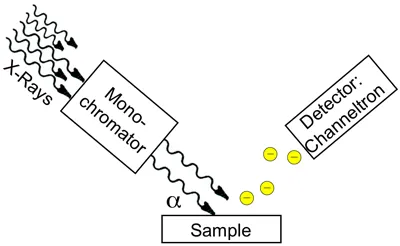Near Edge X-ray Absorption Fine Structure (NEXAFS)

The NEXAFS technique makes use of X-ray radiation (photon energy several 100 eV) produced by a synchrotron to obtain element specific information on atomic states and molecular orbitals. With the help of a monochromator (see above) the incident photon energy is tuned through an adsorption edge of interest and causes the emission of electrons that are detected. The obtained signal thus is Current in dependence of the photon energy I(E).
In our case we mainly study molecules on metal surfaces. Molecular subgroups feature resonances that appear as peaks in the NEXAFS signal at energies that differ from subgroup to subgroup. By analysing the energetic positions of the peaks the chemistry of the sample can be studied. Often we deal with highly ordered systems. In that case, from the dependence of the intensity of a specific resonance on the angle of incidence one can obtain information on the adsorption geometry of the molecule.

The above figure shows a series of NEXAFS spectra for several layers of terephtalic acid on a Pd surface. The angle dependence of both functional groups (red and blue) indicates that the molecules are in a flat conformation (see model) and lie almost parallel to the surface throughout all the layers.